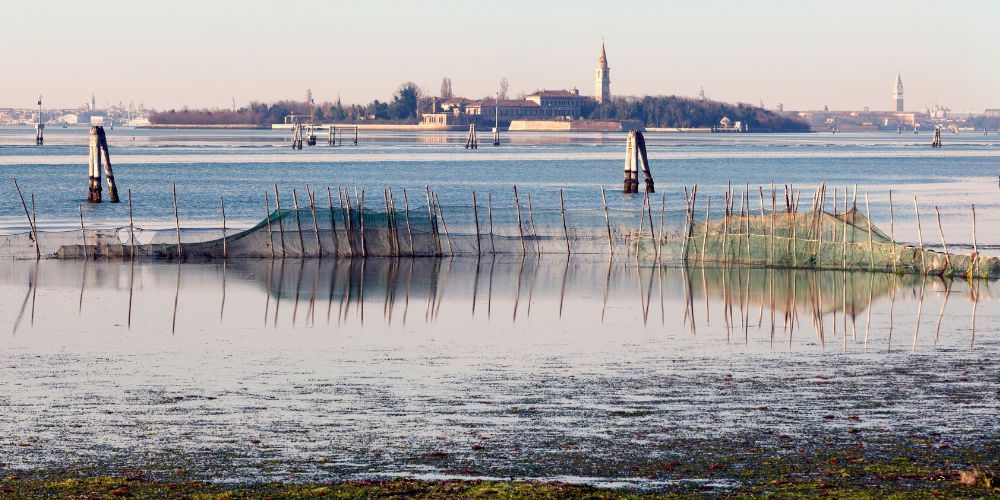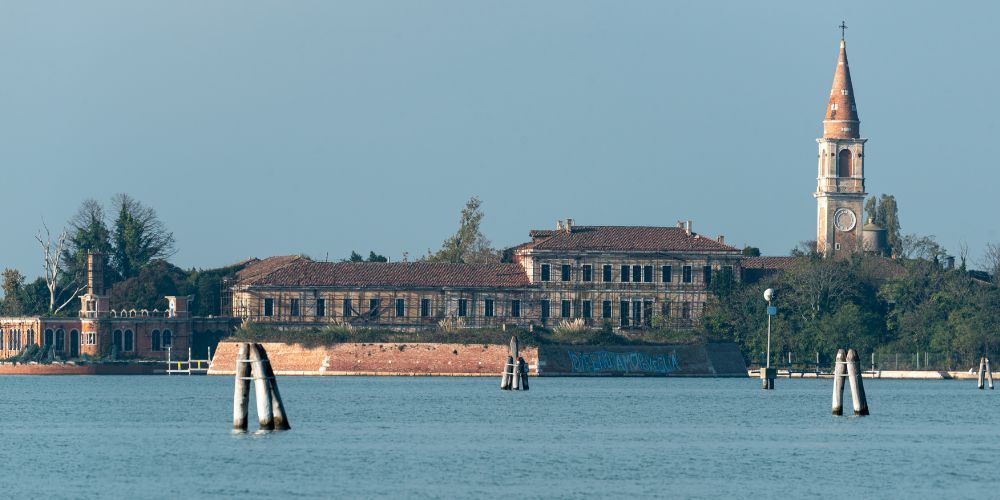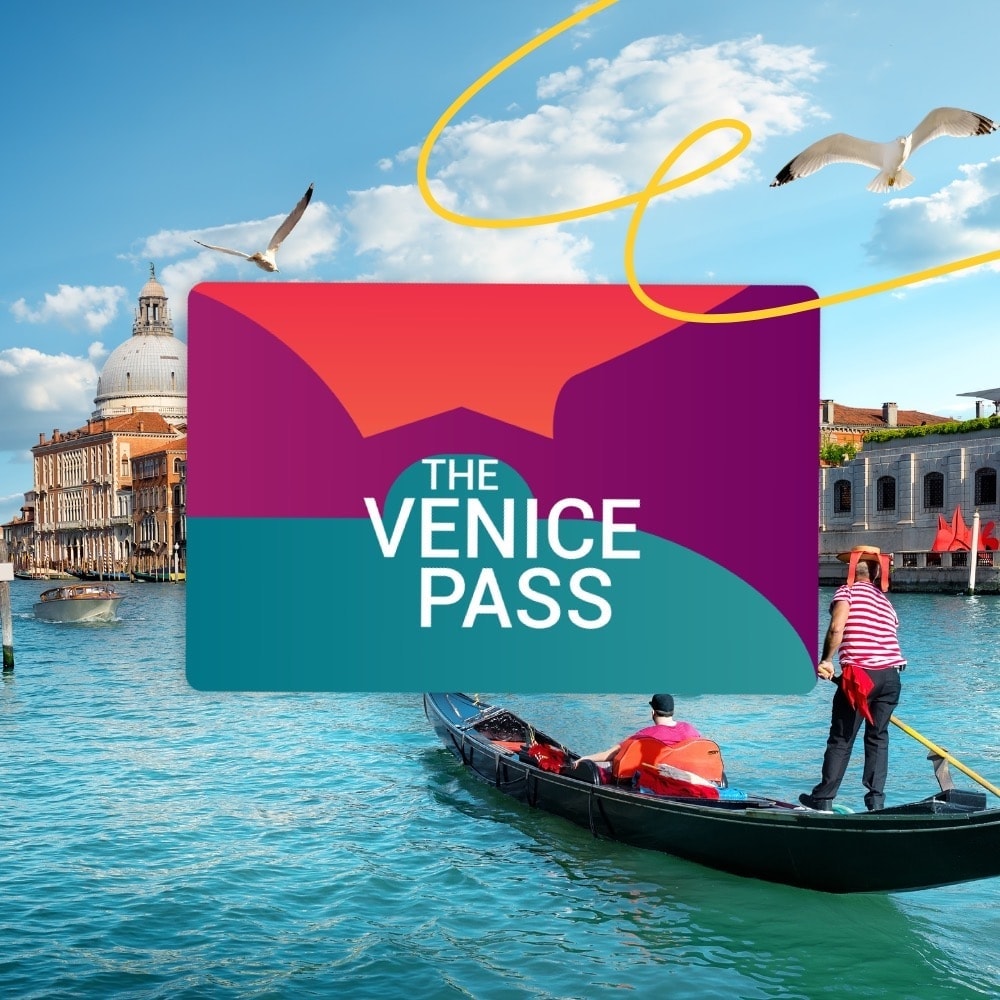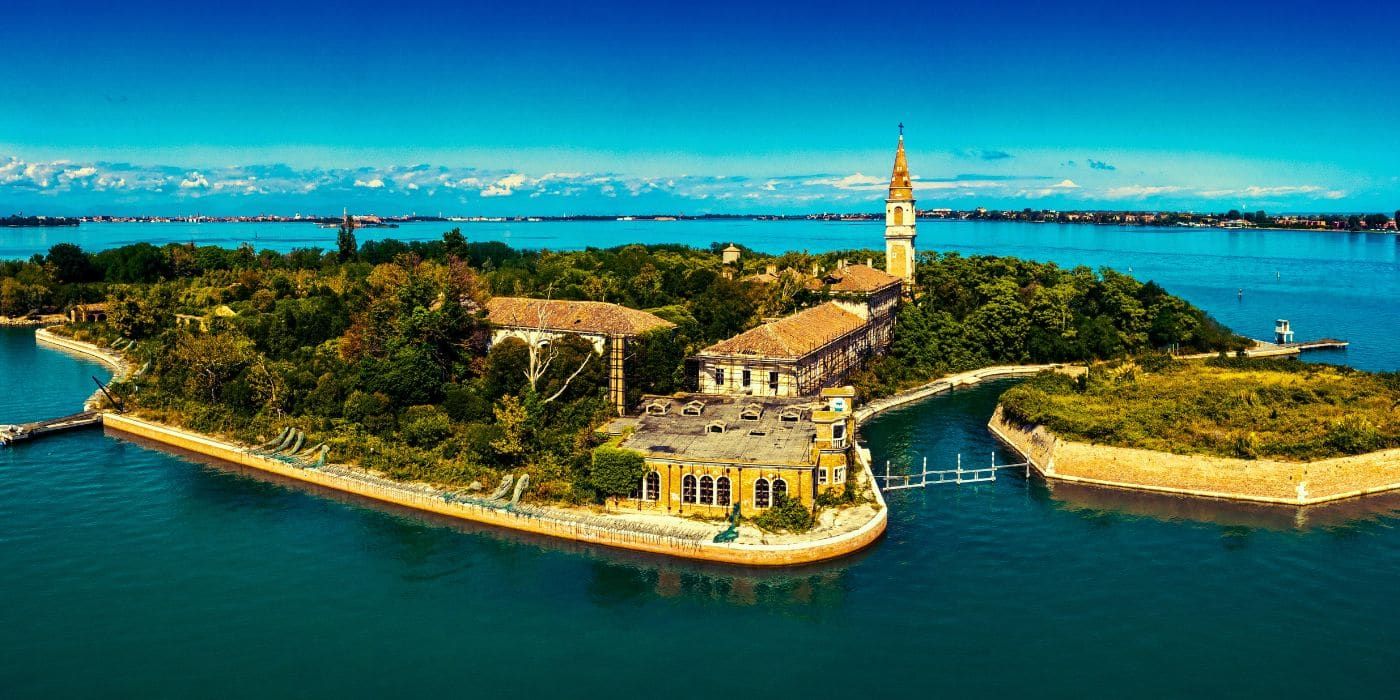There’s a corner of the Venetian lagoon where time truly seems to have stopped, where mist clings to crumbling ruins and every gust of wind carries a whisper from the past. This is Poveglia Island, a forgotten fragment of Venice hidden among the waters that separate the city from the Lido.
Just a few kilometers from the elegant alleys of St. Mark’s, Poveglia lies silent and unreachable, watched over only by seagulls and legends. For centuries, it has been the stage for dark and disturbing stories: plague, forced quarantines, abandoned medical facilities, and whispers of restless souls... It’s no surprise that today, its name has become synonymous with mystery and unease, making it one of the most haunted places in Italy.
Some are drawn to its tragic past, others fear the rumored paranormal presences, and there are those who dream of setting foot on its forbidden soil, even if only for a moment. Poveglia is a fragile threshold between reality and legend, between what can be seen and what cannot, and it’s this very ambiguity that gives it such power in the collective imagination.

A forgotten archipelago: the dark history and geography of Poveglia in Venice

At first glance, it appears to be a single, silent island in the lagoon. But Poveglia is, in fact, a small archipelago, three separate stretches of land, each with a distinct role over the centuries. South of Venice, directly across from the Malamocco district, it might be glimpsed from a boat gliding toward the Lido, if not for the suspended stillness that cloaks it, like a veil between reality and the unknown.
Ancient maps refer to it by different names: Poveggia, Popilia, perhaps a tribute to the poplar trees that once covered it, or an echo of the Via Popilia-Annia, the Roman road commissioned by consul Publius Popilius Laenas.
Names that hint at its layered, ancient presence, just like its long and complex past. The central and largest part of the island holds most of the ruined structures, half-swallowed by vegetation. A bridge links it to its smaller sister island, while nearby rises the octagonal islet, built in 1380 as a defensive stronghold, a floating fortress that completes this unusual geography.
First mentioned in the 8th century, Poveglia Island began to be permanently inhabited in the 9th, becoming a haven for the displaced people of Malamocco fleeing barbarian invasions. For a time, it flourished as a peaceful lagoon community, until the 14th century, when the Republic of Venice ordered its inhabitants to relocate, leaving the island abandoned and ready for darker roles that would forever mark it in the collective memory.
In the 18th century, Poveglia became a lazzaretto, a quarantine station for plague victims condemned to live out their final days far from the world, waiting for disease, or death, to decide their fate.
But that wasn’t the end. In the 19th century, the island’s purpose shifted again, becoming a medical facility that was later transformed into a psychiatric hospital. It remained in operation until the 1960s.
After its closure, Poveglia slipped into silence. And it was that very silence that nurtured the stories, the legends, and the fears that would make it infamous. Since then, no one has ever lived there again.
Inside the nightmare: what lies among Poveglia’s ruins
Visiting Poveglia Island in Venice is an experience that borders on hallucination, where the line between history and haunting suggestion blurs with every step.
It’s a place that breathes, but silently, through the cracks in its peeling walls and the roots that creep across shattered floors. Here, nature has taken back control, as if trying to swallow what remains of the past.
The buildings that once gave shape to daily life now appear like ghosts of themselves: the abandoned hospital, the prisons, the chapel, and the psychiatric ward emerge from the overgrowth with an eerie, spectral air.
The first encounter is with the old hospital, a crumbling structure that still hints at its former complexity. The ground floor, though strewn with debris, is partially accessible: empty, dark rooms with barred windows shut out the light, amplifying the unsettling atmosphere. The stairways, half-destroyed, require extreme caution. Those who dare to climb find themselves on a first floor even more unstable, where much of the flooring has collapsed and the silence becomes deafening.
Beyond the hospital kitchens stands the Bell Tower, the sole survivor of the ancient Church of San Vitale. It is the island’s vertical heart: tall, solemn, and made all the more evocative by the clock it bears, crafted in 1745 by Bartolomeo Ferracina, whose missing hands have frozen time in place.
Further along, the vegetation thickens, yet a winding path snakes through thorns and stillness. It skirts a small, collapsed building, perhaps once a shelter, now just rubble.
And finally, the church. Or rather, what little remains of it. The miraculous 15th-century crucifix it once housed has thankfully been relocated to the church in Malamocco. But other works of art, like the paintings by Giulia Lama and Giovanni Battista Piazzetta, have been lost forever.
One last wooden bridge leads to the most remote edge of Poveglia Island, where there are no buildings, only silence and water. And perhaps, in that emptiness, lies the island’s deepest secret: its ability to unsettle not through what is seen, but through everything that cannot be explained.
How (not) to visit Poveglia Island: information for the boldest spirits

Exploring Poveglia Island is not for everyone. Not only because of what it represents, but also because reaching its shores demands determination, resources, and more than a bit of luck. Officially, the island is closed to the public. No vaporetto stops there, and no regular tourist route includes this forgotten corner of the lagoon.
Access is prohibited, and anyone wishing to set foot among its ruins must undertake not just a physical journey, but a bureaucratic one as well.
A private water taxi from Venice or the Lido can bring you close enough to glimpse its crumbling outlines, ivy-clad walls, and hollow windows staring into the void. But to disembark, you’ll need official authorization, which must be requested well in advance from the City of Venice. These permits are rare and difficult to obtain, often reserved for researchers, documentary filmmakers, or exceptional cases.
That said, a handful of private tours are still available, offered by those who know the waters of the southern lagoon intimately. These aren’t ordinary sightseeing excursions, but rather ritual-like incursions, led by expert guides who, on occasion, manage to secure permission for a visit. Unsurprisingly, the cost is high, not only for the transportation but for the exclusivity of the experience.
Anyone considering such an adventure must be fully aware of what awaits. Poveglia Island is completely uninhabited, with no services or facilities. There is no fresh water, no reliable cell coverage, no shelter from the rain, only ruins, wild nature, and a silence thick with presence. For this reason, visitors must come prepared: bring food, water, a flashlight, and above all, the right state of mind.
Beyond Poveglia: beauty, art, and light in the lagoon

After brushing against the darkness of Poveglia Island, a journey through the Venetian lagoon can drift back toward brightness, elegance, and creativity. It takes just a shift in emotional current to rediscover the more classic, comforting side of Venice, through its sister islands, which hold stories of an entirely different kind, yet no less captivating.
The first stop is the Lido. A slender strip of land suspended between the lagoon and the Adriatic, just minutes from St. Mark’s Square, where the air smells of sea breeze and maritime pines, and everything invites you to slow down. Its ten kilometers of golden beaches reveal a different face of the Serenissima: the elegance of early 20th-century summers, Liberty-style villas tucked along tree-lined avenues, and the timeless allure of the Venice Film Festival, which transforms the island each year into a red carpet floating on water.
But the Lido is also everyday life, bike rides, families on the shoreline, couples strolling hand in hand at sunset.
A little farther north, Murano reveals the lagoon’s more industrious and glittering soul.
Here, fire has shaped something extraordinary for centuries: glass.
Since 1295, the Republic of Venice ordered all glass furnaces to relocate to this island, both to protect the flammable, wood-built city from fire, and to guard the secrets of its master glassmakers. Walking through Murano means wandering among quiet canals, low bridges, and workshops where glass is still blown, molded, and carved with rare artistry.
From crystal to lattimo (the milky-white glass), from intricate murrine to sleek modern objects, each piece carries with it centuries of skill, passed down through generations.
For those wishing to explore the heart of this tradition, the Glass Museum, housed in the evocative Palazzo Giustiniani, offers a journey through time, from Phoenician, Roman, and Egyptian artifacts to the most iconic works of Murano’s glassmakers.
Can tourists visit Poveglia Island?
Can tourists visit Poveglia Island?
Generally speaking, no. Poveglia Island is officially closed to the public: there are no ferries, vaporettos, or regular tourist routes that stop there. However, in exceptional cases, it is possible to obtain special authorization from the City of Venice or join rare and costly private tours organized by experienced local operators. For most curious travelers and history enthusiasts, the island can only be viewed from the water, perhaps during a boat trip through the southern part of the lagoon.
Why is it called “haunted”?
The nickname “haunted island” stems from the many tales that have wrapped Poveglia in a dark aura over time. From the days of devastating plagues, when it was turned into a quarantine station, to its later use as a psychiatric hospital, the island has witnessed suffering, isolation, and death. Over the years, accounts of ghostly apparitions, strange phenomena, and eerie presences have multiplied, contributing to its reputation as one of the most terrifying and mysterious places in Italy.
What is the history of the island?
Poveglia’s history is long and troubled. Inhabited since the 9th century, it first served as a refuge for people fleeing from nearby Malamocco, then evolved into a small lagoon community before being abandoned.
In the 1700s it became a quarantine island for plague victims; during the 1800s, it hosted a hospital and later a psychiatric asylum. Officially closed in the 1960s, it has remained uninhabited ever since, allowing myths and legends to blur with reality.
Why is Poveglia Island considered one of the most haunted places in Italy?
Beyond its documented past filled with pain, illness, and abandonment, it’s the oral stories and unsettling impressions that have made Poveglia Island so haunting. Various international TV shows and paranormal documentaries have featured it as a site of unexplained phenomena. A few determined visitors claim to have sensed presences, heard disturbing sounds, or felt an overwhelming sense of dread. Whether or not one believes, the island leaves few indifferent.
Can you visit Poveglia without permission?
No. Entering the island without an official permit is considered illegal. Despite occasional unauthorized landings by daring adventurers, the law is clear: Poveglia is state property, and access is prohibited, not only legally, but for safety reasons, due to the instability of its decaying structures.
What is the most chilling story linked to Poveglia Island?
Among the many legends, one of the most notorious speaks of a doctor who allegedly performed questionable experiments on psychiatric patients and who, according to some accounts, eventually threw himself from the bell tower.
Others tell of tormented souls, ghostly voices rising in the night, and presences that defy explanation. No one can say for certain what is true, but the island continues to cast a dark fascination that seems to defy both time and reason.
About the author
Written on 10/09/2025




Flavia Cantini
A ghost island in the heart of Venice’s lagoon. Poveglia intrigues, haunts, and keeps its legend alive.